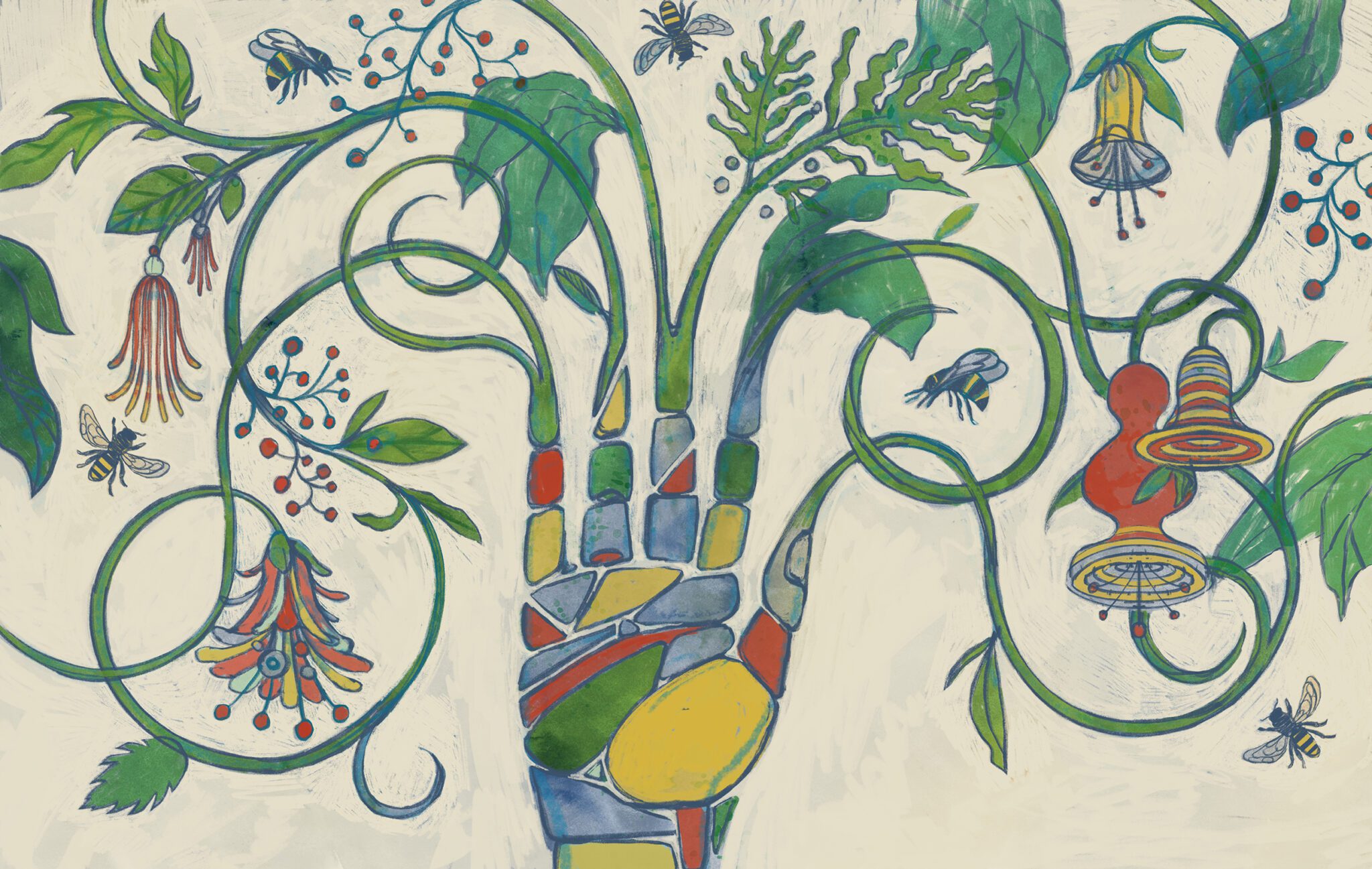
At a Masonic Cemetery, a Forever Home
In rural Tuolumne County, a new effort to bring a pair of Gold Rush era Masonic cemeteries back to life.
A near-death experience: Time stalls or it speeds up. Your thoughts race. Bodiless voices whisper. All at once, you know the answer to every question you’ve ever had about yourself, your life, the universe. You become aware that you’re part of a larger whole. Peace shrouds you like a comfortable blanket. A bright light dazzles you; a tunnel or door beckons. You see yourself from outside your body, watch a surgeon carefully operate on your heart or a first responder work to pull you from a crushed car. You become aware that something exists beyond the reach of your senses. Perhaps you even see a being, feel a presence.
These are some of the hallmarks. We don’t know exactly why or how they occur, although typically they happen in the throes of severe, life-threatening trauma. Studies estimate that a many as 8 percent of people have had a near-death experience. That figure jumps as high as 23 percent for cardiac arrest survivors.
Even if we don’t yet understand the why or how of these encounters, Steve McLaughlin believes near-death experiences have a lot to teach us.
McLaughlin, a clinical psychologist with the Masonic Center for Youth and Families, has been fascinated by the phenomenon for decades. It’s an interest that he traces back to his time as a student at the Fuller Theological Seminary in Pasadena, where he obtained his doctoral degree in clinical psychology and his master’s in divinity. He was particularly captivated by stories of people who’d had out-of-body experiences during a near-death episode. Many recalled seeing themselves or their surroundings from an exterior point of view.
“From the outside, they’re not very responsive at all,” McLaughlin says. “And yet the things they describe are much more involved and elaborate and real compared to the state of their body. You listen to them and your jaw kind of drops.”
For his dissertation, McLaughlin investigated the connection between near-death experiences and spirituality. He interviewed 40 people who’d had a close brush with death and found that the more traumatic the episode, the more likely that religion became important to them afterward. He also found that survivors were more likely to become active in their faith.
“In talking to these people, I came away with a sense that there’s more out there than just the physical world I live in,” he says. As a practicing Christian, McLaughlin already believed in an afterlife. But what he learned through his research underscored “that there’s something going on there that’s more than just everyday reality,” he says. “It seems pretty real, pretty significant.”
Scientific interest in near-death experiences has grown exponentially over the past four decades. In 1983, the year before McLaughlin finished his dissertation, just 10 scientific papers on the topic had been published. There are now several hundred, according to a 2020 study in the journal Consciousness and Cognition.
The link between faith—or at least spirituality—and near-death experiences still intrigues McLaughlin.
It has also provided him with comfort as a person who has experienced loss. While McLaughlin was conducting his dissertation research, his mother died of a cerebral hemorrhage at just 57. What he heard from people who’d had near-death experiences gave him, in his words, “a sense of connection with something beyond our five senses.”
That’s a sentiment McLaughlin incorporates into his professional work as a clinical psychologist, where he specializes in treating those dealing with PTSD and grief. Prior to coming to MCYAF, McLaughlin spent 10 years working in the state prison system. McLaughlin is based at the Masonic Homes campus in Union City, where he interacts primarily with the very elderly—people who are close to death and often have experienced the loss of a loved one. According to McLaughlin, the elderly have a different perspective on mortality. “When you’re younger, you sort of block death out. You don’t think about it much—you’re living your life,” he says. “As you get older, it becomes harder to block out.”
When working with grieving people, “there are certain emotions and feelings and issues that tend to come up pretty regularly,” McLaughlin says. So he strives to make therapy a safe environment for working through whatever arises, be it denial, anger, guilt, loss, or sadness. “Ideally, you’re trying to help the person come to some acceptance, or come to terms with what’s happened.”
It isn’t always easy, but the key is to “be a support to that person, allowing them sadness and loss, anger and frustration,” he says. “Grief is a process, and if they feel like you care about them and you’re there with them, that’s the best you can do.”
As much as the pandemic “feels like a big burden” to many of us, McLaughlin says, it can teach us things about grief and mourning. “Both require a certain kind of resilience. We didn’t choose the pandemic. You don’t choose grief, either. It’s generally kind of thrust upon you.” Being close to death, whether through a near-death experience or approaching the end of one’s own life, gives people the opportunity to “broaden their perspective on life,” he says. “They can step back from everyday life and find it to be a little more meaningful.”
When they do, many people take a personal inventory and find clarity about what matters most to them, McLaughlin says. In those cases, one thing usually rises to the top: “People come away from these experiences valuing their relationships with other people. That’s what really matters.”
PHOTOGRAPHY BY
Klimek Photo

In rural Tuolumne County, a new effort to bring a pair of Gold Rush era Masonic cemeteries back to life.

The 18th century Benicia Masonic Hall, the oldest Masonic lodge in California, gets a 21st century makeover.

Thanks to lodge volunteers, Masonic Outreach Services can be everywhere to provide support to those in need.